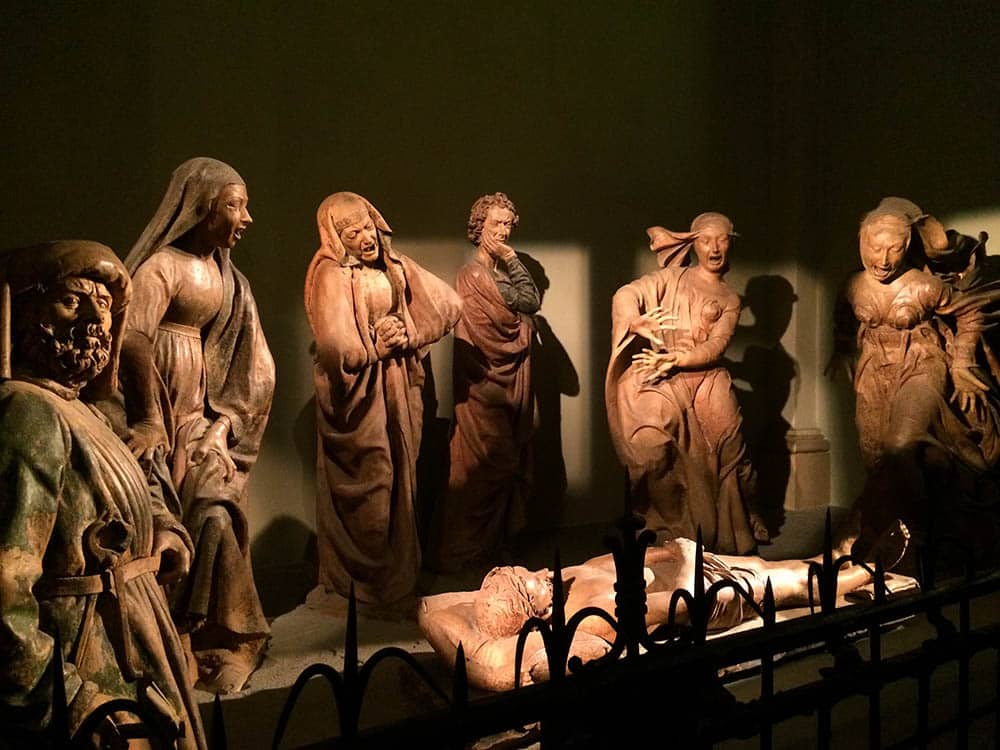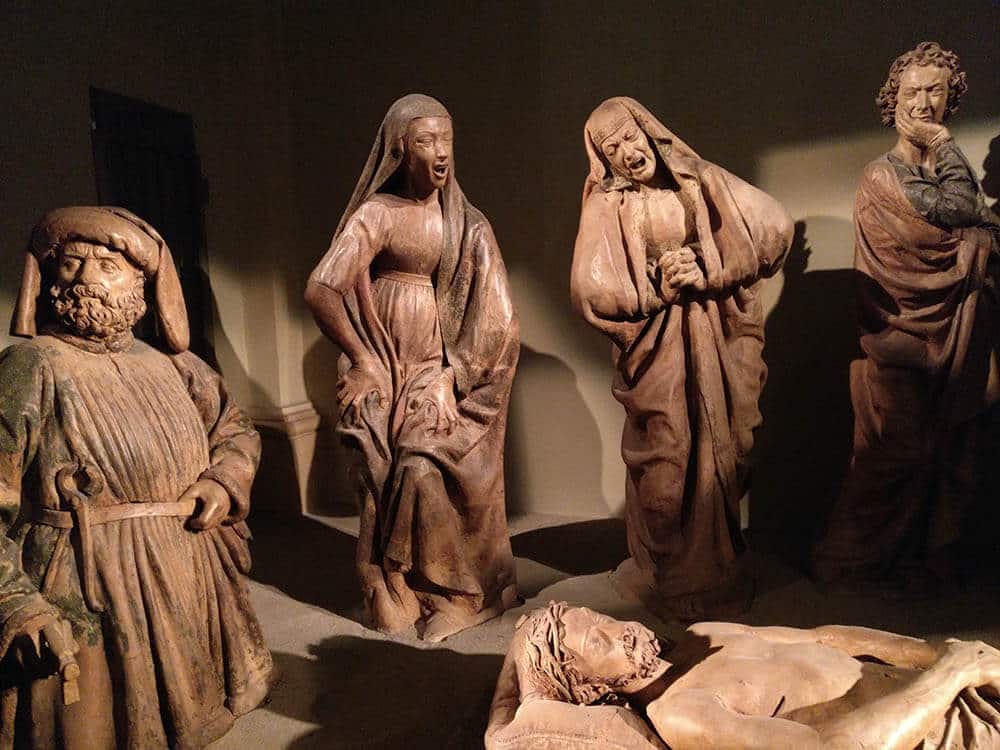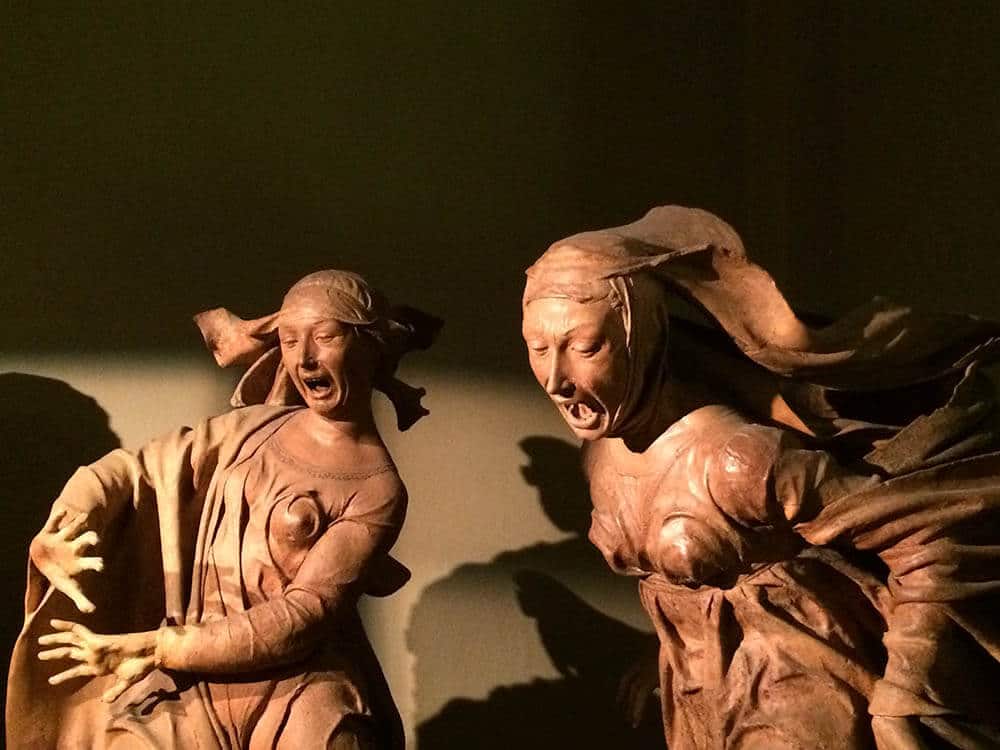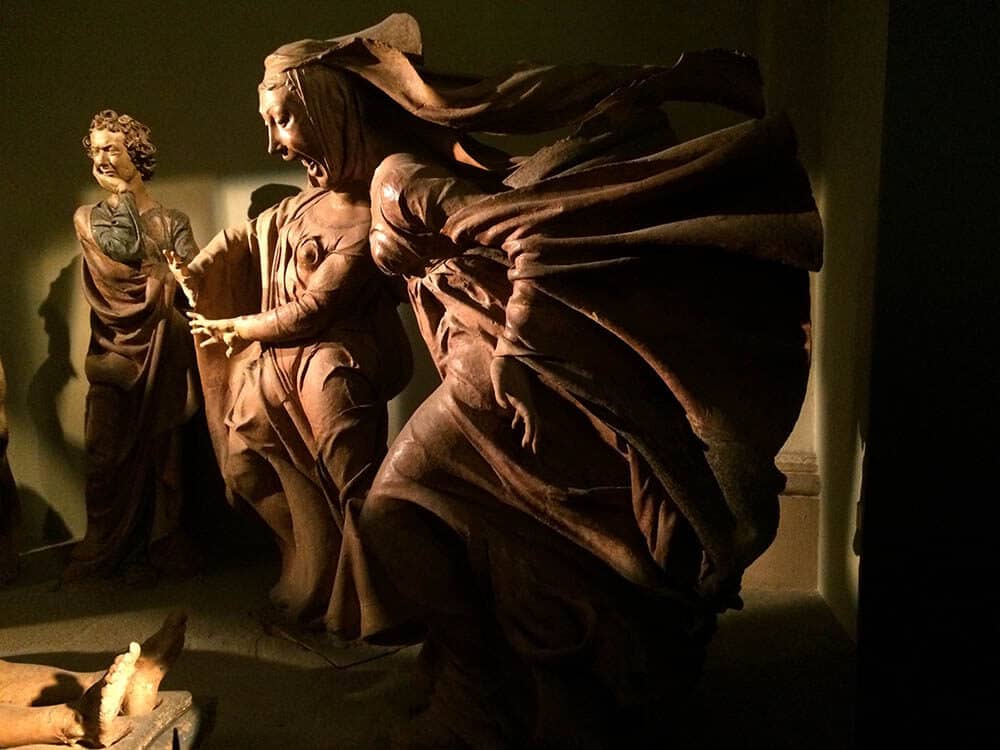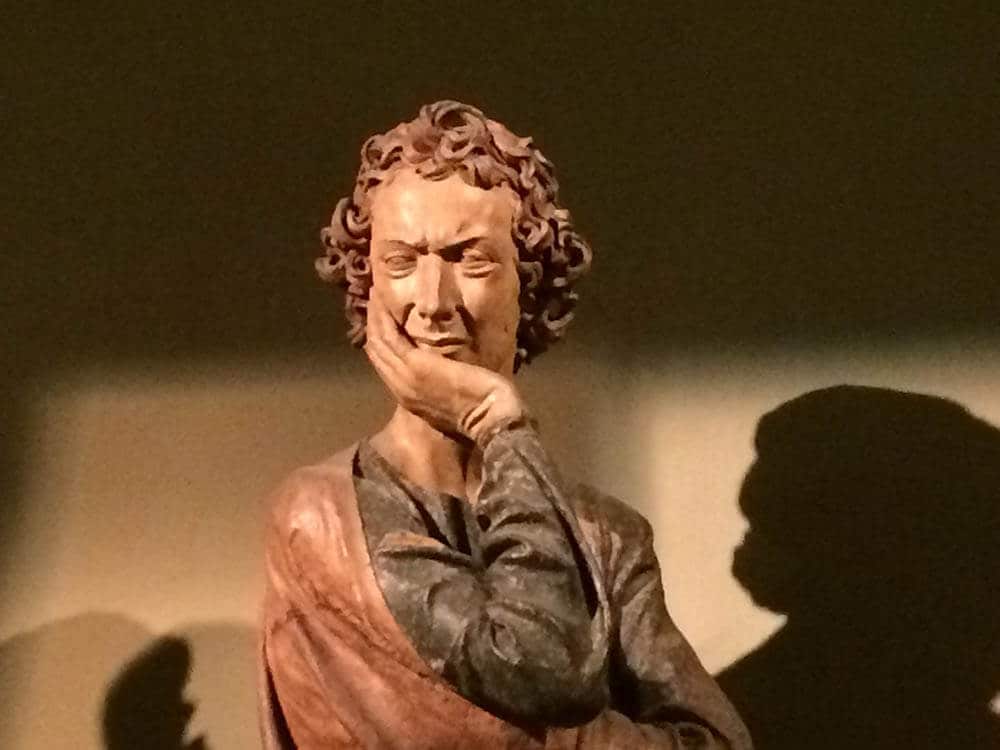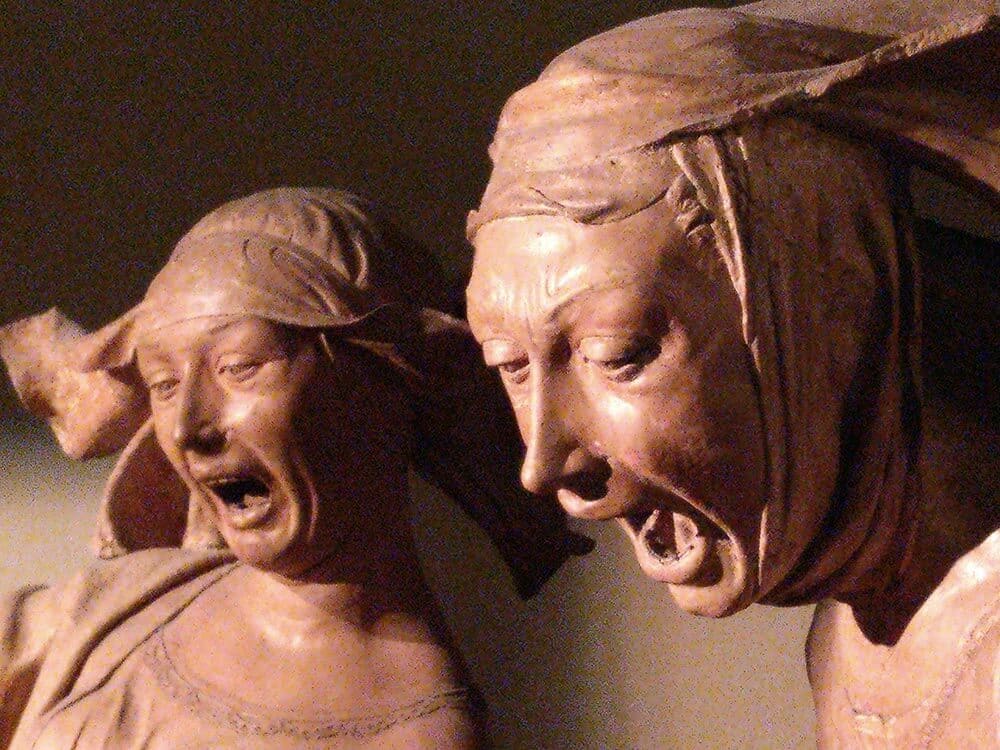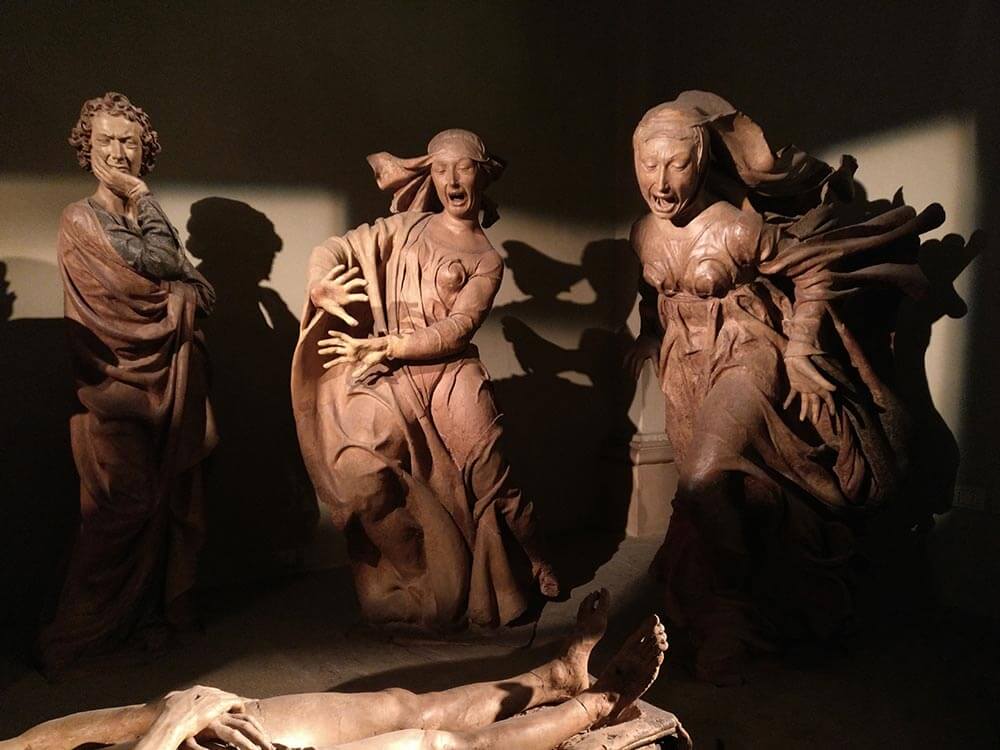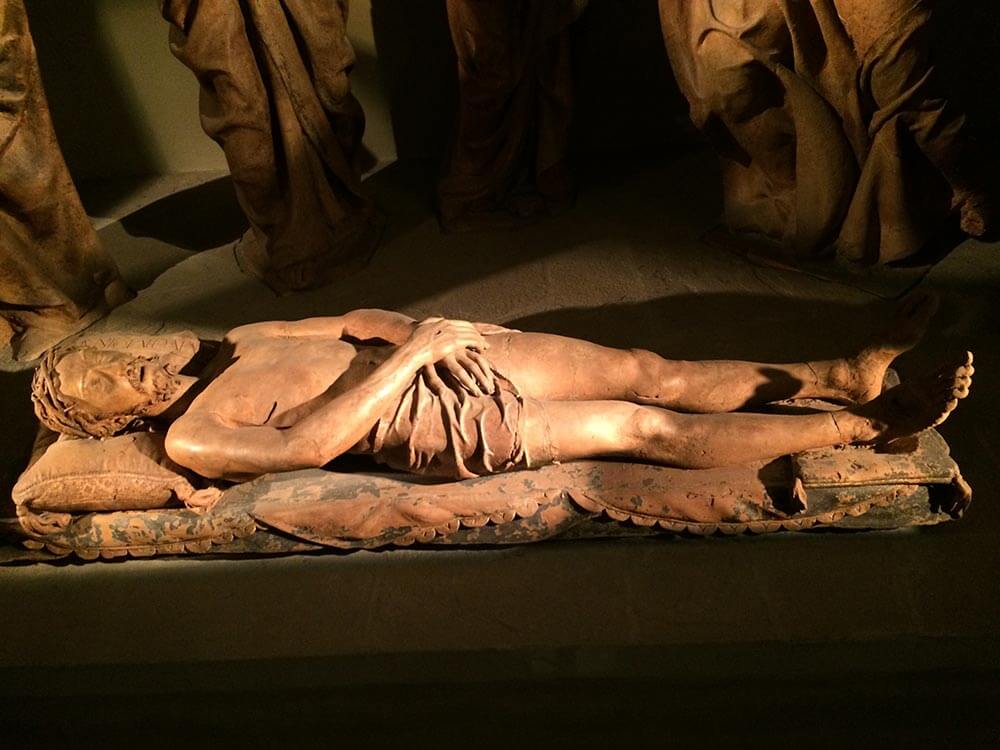Bologna the Erudite, the Fat, the Red: the three definitions of Bologna only describe its surface. Home to the first Western university, the cradle of one of the richest cuisines of Italy and architecturally dressed with the warm hues of red and ocher, the city hides in its palaces and streets an immensity of treasures.
One of these is the Lamentation of the Dead Christ of Nicholas Ark, in the church of Santa Maria Della Vita in Bologna.
The emotional impact represented in this work showing the removal of Christ surrounded by the presences reported by the Gospels has nothing classic: the faces and the postures modeled by the author, totally break the traditional patterns of religious figuration, showing an extreme violence of feelings. Both the exact date of its realization and the identity of those who commissioned it, are shrouded in mystery, as well as the exact placement of the statues. The most accredited hypothesis of a date oscillates between 1463 and 1490.
The statues group is composed of seven life-size terracotta figures which had a long and troubled life: only recently returned to its original place in the church in Bologna, in the first chapel to the right. In addition to the dead Christ, the other canonical figures are those who took part in the latter stages of the Passion: the Virgin Mary, the “three Maries” : Mary Cleophas, Mary Salome (the mother of John the Evangelist) and Mary Magdalene along with the two male protagonists of the Deposition from the Cross: Joseph of Arimathea and John the Evangelist.
In the fifteenth century, the creation of these groups of figures saw an extraordinary diffusion in Northern Italy with the aim of inducing the faithful to an identification with the protagonists of the Gospel story by making them as similar as possible to the people living in the community. This need also explains the research by the artist of a marked naturalism in the depiction of the carved figures, including the choice of popular physiognomic traits, colors, and clothing, for the most part, in use at the time.
In his search of naturalism and truthfulness, Nicolò dell’Arca speaks about the real pain, that of humans and not that of the saints, the agony suffered by a mother who loses her only child and friends who feel the horror of watching helplessly the mangled body of the man they loved the most.
The clothes flying, the hand gestures, the mouths gaping and the vivid colors we can only imagine: every element contributes to the freezing of time in an almost cinematic frame that pushes the viewer’s gaze to the lying figure, deserted and quiet of the dead Christ.
The scene unfolds in front of our eyes like an immediate and pulsating drama, animated by figures as big as we are, the act of the extreme pain, terrified as we would be.
And once again I find myself thankful for the capacity the Church had to intercept the best talents who could speak to the eyes and to the heart of their contemporaries and still, after a number of centuries, manage to catch the attention of modern, distracted and spoiled human beings.
Here you can view a video that higlights this marvelous art work:
Betti
[socialWarfare]

